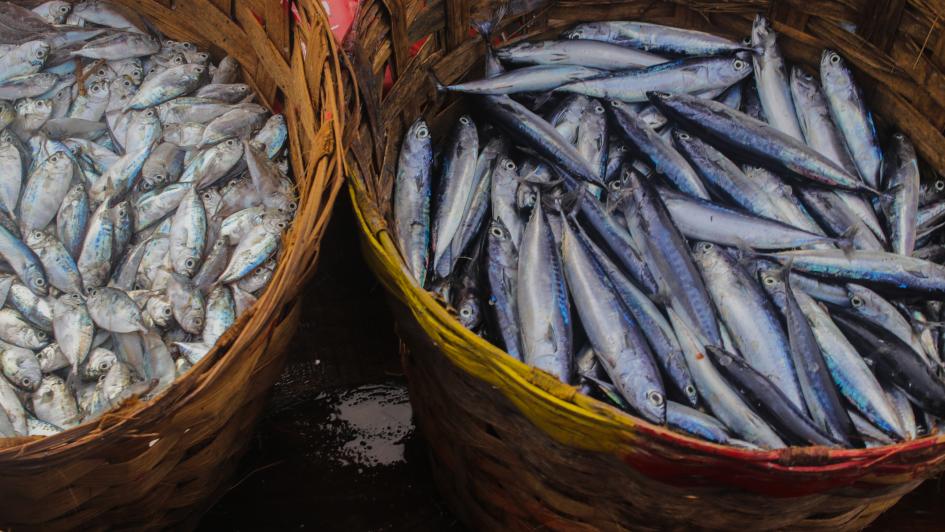Wild? Farmed? Which Should You Eat?

Published
With consumption at an all-time high, fish farming practices have become a predominant consideration for consumers.
Over the past fifty years, the supply demand of fish for markets and restaurants has surpassed the population of our oceans fish twofold. Global per capita consumption has increased 102 percent since the 1960s. As a direct consequence, many of your favorite species have become vulnerable to overfishing. To aid global demand, farm-raised practices have rapidly increased and supplies have become more prevalent in the supermarket. This raises concerns about environmental issues, food safety, and cost.
Environmental Impact
Wild-caught fish are harvested through a wide variety of fishing practices. Many use sustainably and environmentally responsible methods to reduce harm. Other methods may cause collateral damage to the ecosystem and other fish. Some of these include:
- Bottom trawl – Type of fishing net pulled along the seafloor. The nets often catch unintended species. Habitat and seabed damage are common as a result of dragging heavy gear across the seafloor.
- Gillnetting – Curtains of netting suspended by a system of floats or weights. Accidental entanglement and mortality of sea wildlife is sadly common.
- Longlining – A central fishing line that can range from one to 50 miles long. Lines set near the surface often attract sea turtles, sharks and seabirds that can become hooked and trapped.
Fish farming (aquaculture) involve numerous types of farming systems that also share both positive and negative impacts on the environment. Certain farming systems pose greater issues than others. These include:
- Hatchery – Fish bred and raised in nurseries either for aquaculture or wild-capture fisheries. Often released into the wild in large numbers, these fish compete with wild populations for food. Interbreeding may take place; risking the sustainability of wild populations.
- Open Net Pens or Cages – Enclose fish in coastal areas or freshwater lakes. Waste flows freely into the surrounding environment causing habitat pollution. Wild fish living or swimming nearby may become infected with disease or parasites.
- Raceways – Allows farmers to divert water from a waterway, like a stream or well, so that it flows through channels containing fish. Water treatment is essential and often highly regulated. However, if left untreated wastewater can contaminate waterways and spread disease.
Food Safety
Farming methods that involve the use of questionable substances such as chemicals, antibiotics or hormones may leave consumers speculating about the consequential health effects of farmed raised fish. In comparison, global environmental pollution is a primary source of contamination in wild fish. Contaminants such as polychlorinated biphenyls (PCBs) and organochlorine pesticides (OCPs) have been found in farmed and wild fish. The concentration of contaminants differs among species. Therefore, certain farmed varieties may contain lower concentrations than their wild caught equivalents. Do not despair, both are safe to eat! Contaminant levels are deemed below the approved USDA tolerance levels. What about antibiotics or hormones? The United States has strict regulations that prohibit the use of either to promote growth of farm-raised fish. Imported fish from regions outside the US may contain these substances, so it is important to know the source of your fish.
Seasonality and Cost
Just like fruits and vegetables, fish are seasonal. The seasonality of fresh caught fish will dictate the variety and regularity of availability. Not unlike a soft and juicy pear purchased during the peak of winter season, seasonal fish are bursting with flavor and nutrition. Here in the Pacific Northwest, fresh and frozen fish are readily available year-round. The bounty of resources and range of pricing may seem overwhelming. Understanding that wild caught is more expensive than farmed raised may help you and your budget when at the fish counter.
The World Bank estimates that by 2030 nearly two-thirds of seafood will be farm-raised. At some point, fish just might make a debut on your dinner menu and it is likely to be farm raised. That’s okay! Enjoying an omega-3 rich piece of salmon should be as worry free as possible. The next time you are at the fish counter, consider these simple tips to aid you in making your environmentally friendly purchase.
- Get to know your fish monger! These are the experts at your fingertips. With a wealth of knowledge and eagerness to share, they can help you make the best decision. They often have delicious recipe ideas too!
- Choose responsibly fished or farmed seafood. The Monterey Bay Aquarium Seafood Watch is a program that creates science based recommendations specific to your location. Here are a few examples from that list:
- Arctic Char (farmed)
- Rainbow Trout (US farmed)
- Albacore Tuna (troll, pole or line caught)
- Buy seasonally, locally sourced fish. Most every fish market or supermarket supports local fishermen and offers at least one seasonal variety. Look for regional information on the price tag.
- Buy frozen. Do not shy away from buying frozen fish. Some sustainability caught wild fish may not be readily available fresh but are often available frozen. Utilize the Seafood Watch and look for responsibly fished or farmed options.
Ready to give natural health care a try? Schedule an appointment at Bastyr Center for Natural Health or Bastyr University Clinic today.
Sources
Fao. The State of World Fisheries and Aquaculture 2016. http://www.fao.org/3/a-i5555e.pdf. Accessed October 29, 2017.
Nøstbakken OJ, Hove HT, Duinker A, et al. Contaminant levels in Norwegian farmed Atlantic salmon (Salmo salar) in the 13-year period from 1999 to 2011. Environ Int. 2015;74:274-280. doi:10.1016/j.envint.2014.10.008.
Lundebye A-K, Lock E-J, Rasinger JD, et al. Lower levels of Persistent Organic Pollutants, metals and the marine omega 3-fatty acid DHA in farmed compared to wild Atlantic salmon ( Salmo salar ). Environ Res. 2017;155:49-59. doi:10.1016/j.envres.2017.01.026.
Ashley Judson, MS, 2017-2018 Dietetic Intern


